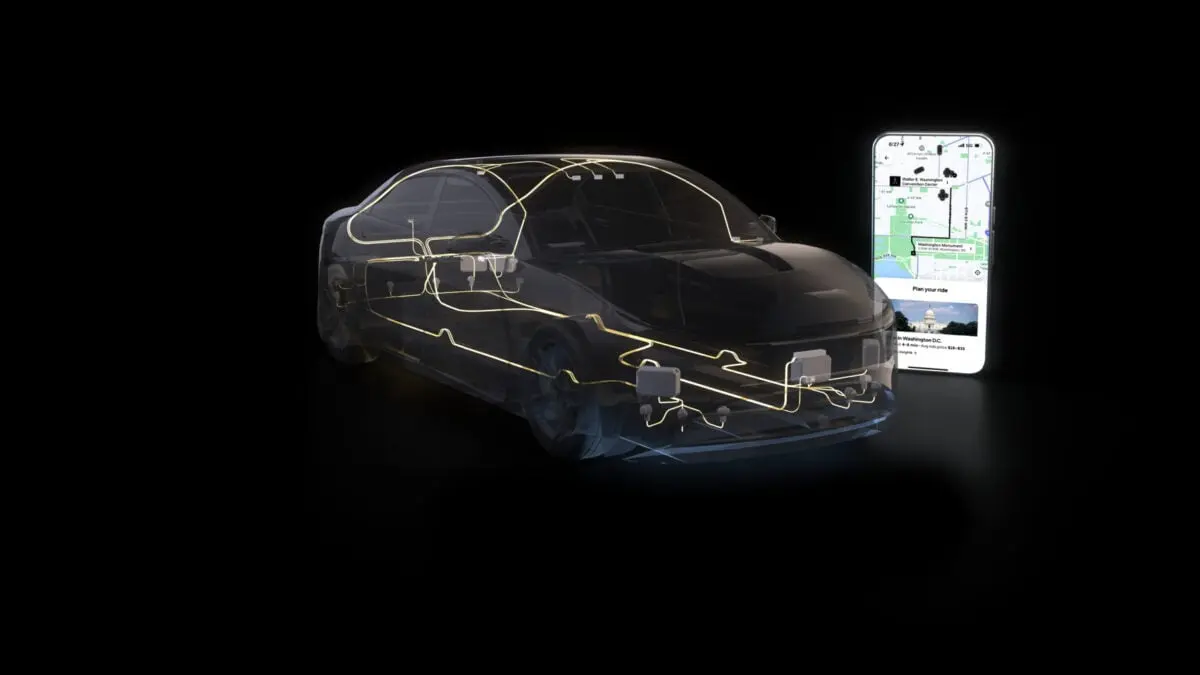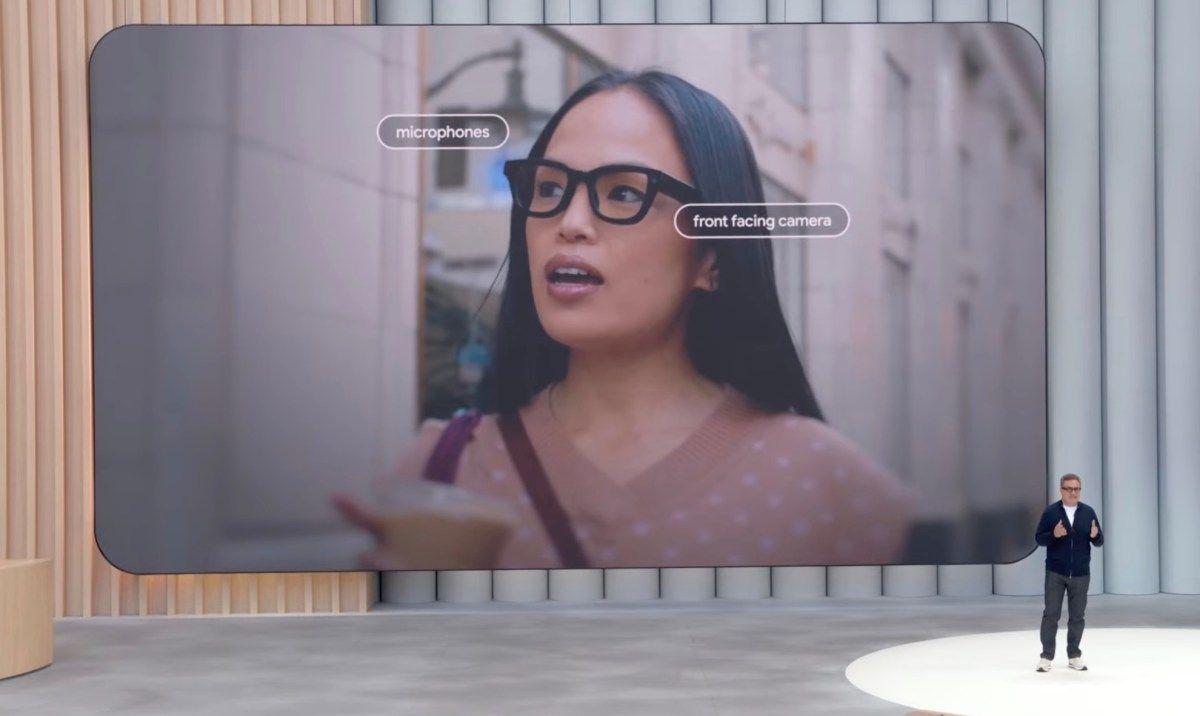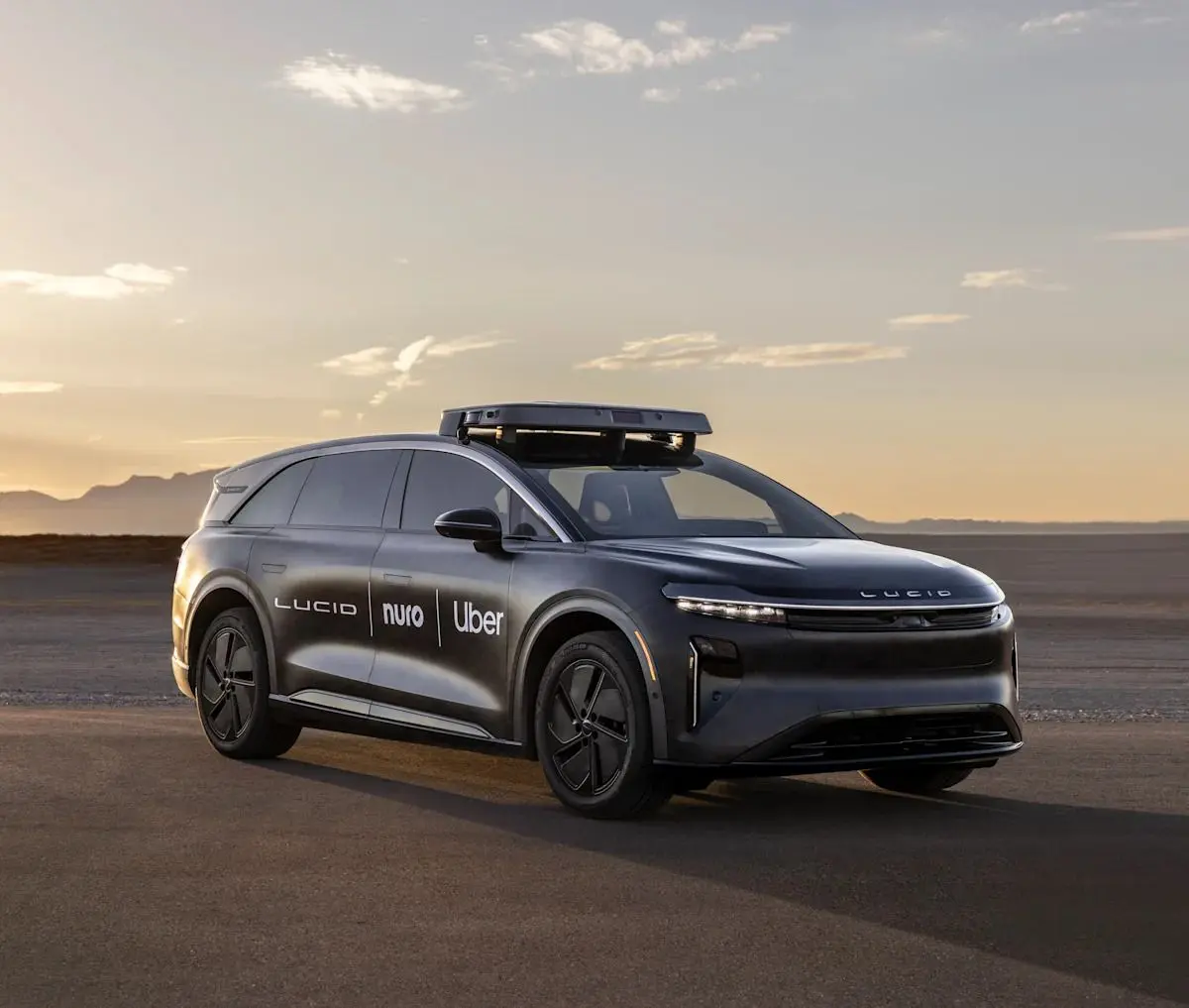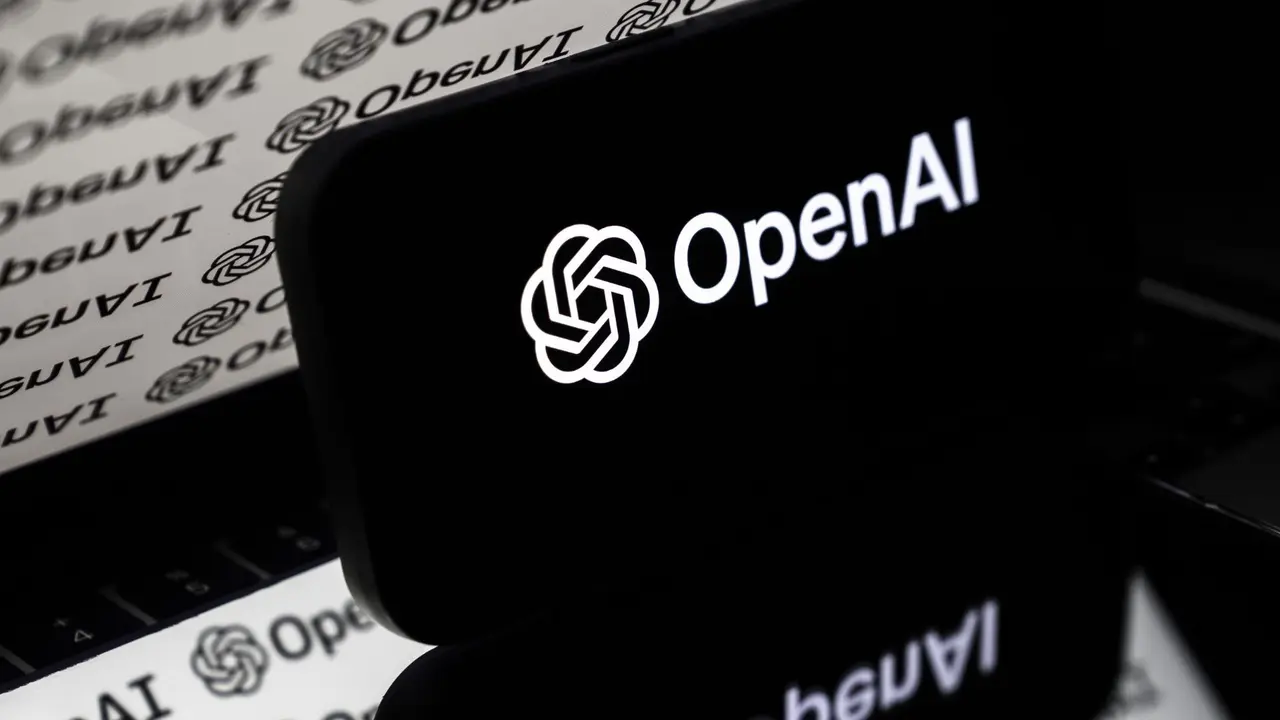Nvidia and Uber Partner to Deploy 100,000 Robotaxis by 2027
7 Sources
7 Sources
[1]
Nvidia and Uber Say They're Building a 100,000-Vehicle Robotaxi Network
Uber and Nvidia are partnering to build a fleet of 100,000 robotaxis. "This is going to be a new computing platform for us, and I'm expecting it to be quite successful," CEO Jensen Huang said at Nvidia's first-ever Washington D.C. edition of its highly anticipated GTC AI conference. According to Nvidia, the fleet will start rolling out in 2027, and 100,000 is the target number of vehicles, but there is no timeline yet on when the companies will reach that level of scale. It's an ambitious target, especially when you keep in mind that major competitor Waymo operates roughly 2,000 robotaxis, according to filings from August. Even so, it's not even remotely the most optimistic estimate in the autonomous vehicle industry. Elon Musk, head of fellow robotaxi provider Tesla, wants to have "millions of Teslas operating autonomously" by the second half of next year. The technology Uber will be using is based on Nvidia's latest in-vehicle computer, Drive AGX Hyperion 10, which Nvidia executives claim will make cars ready for level-4 automation. That means the vehicle would be able to drive itself completely autonomously, without a driver ready to take over, as long as it is operating within designated areas. It's only one level down from truly autonomous driving without any boundaries, which no company has truly achieved yet. "Human robots are still in development, but meanwhile, there's one robot that is clearly at an inflection point, and it is basically here, and that is a robot on wheels," Huang said. "This entire architecture is architected so if any computer or sensor fails, you can always get yourself to a safe stop," Ali Kani, vice president of automotive at Nvidia, said in a press briefing. Huang bragged that “the sensor suite, surround cameras, radars, and lidar make it possible for us to achieve the highest level of surround cocoon, sensor, perception, and redundancy necessary for the highest level of safety.†Unlike other robotaxi providers like Tesla and Waymo, Uber will only work as an autonomous ride-hailing network and won't actually be building the fleet. That job will fall to a handful of automotive partners, including Stellantis, Mercedes-Benz, and electric vehicle manufacturer Lucid Motors. "We created this architecture so that every car company in the world could create cars. Vehicles could be commercial, could be passenger, dedicated to robotaxi," Huang said. The tech will also be supported by a joint AI data factory built on Cosmos, a family of AI models released earlier this year that can be used to train humanoid robots. Nvidia is trying to gain ground in a competitive landscape. Last week, GM unveiled plans to debut not just hands-free but also “eyes-off†electric vehicles by 2028, to much fanfare and investor applause. Earlier this year, at Nvidia's original GTC hosted every March in San Jose, California, Huang announced that GM would use the Drive AGX platform to develop its future fleet of self-driving cars. Following GM's announcement last week, Musk spent most of Tesla's earnings call assuring investors that the company’s artificial intelligence and autonomous driving initiatives were scaling “quite massively," claiming that Tesla had achieved “clarity†on unsupervised full self-driving, and that he now feels confident in expanding Tesla’s production as fast as possible.
[2]
Nvidia partners with Uber on self-driving cars
Why it matters: The "inflection point" for robotaxis "is about to get here," Nvidia CEO Jensen Huang said at the Nvidia GTC in Washington, D.C. Driving the news: The chip maker unveiled Nvidia Drive AGX Hyperion 10, calling it a "reference compute and sensor architecture" for vehicles that can drive themselves with no help from humans. * "It's going to be a very large market," Huang said. Zoom in: Uber plans to bring 100,000 autonomous vehicles equipped with Nvidia's new system into its global ride-hailing network by 2027. * Several automakers -- including Stellantis, Lucid and Mercedes-Benz -- have also signed on to use it, Nvidia said. * "We're architecting a system that can truly drive you from any address to any address," Ali Kani, Nvidia's VP of automotive, told reporters. The big picture: The partnership illustrates the increasingly powerful role of external developers in helping transportation companies bring their autonomous vehicle plans to life. * "NVIDIA is the backbone of the AI era, and is now fully harnessing that innovation to unleash L4 autonomy at enormous scale, while making it easier for NVIDIA-empowered AVs to be deployed on Uber," Uber CEO Dara Khosrowshahi said in a statement. The announcement comes a week after General Motors said it would deploy an "eyes-off" driving system on a Cadillac SUV beginning in 2028. * No automaker has yet sold vehicles to the public that allows drivers to legally take their eyes off the road while driving. By the numbers: Automotive represented only about 1% of Nvidia's revenue in its most recently reported quarter.
[3]
Nvidia enters the robotaxi race with Uber partnership
'There's one robot that is clearly at an inflection point, and it is basically here,' said Nvidia CEO Jensen Huang. Nvidia and Uber are partnering to build a fleet of 100,000 robotaxis and autonomous delivery vehicles, the chip giant said at its artificial intelligence (AI) conference in Washington, D.C., on Tuesday. Nvidia said the fleet will start rolling out in 2027. Both companies are also working together to develop a data factory to process the vast amounts of data needed to develop autonomous vehicles. "Human robots are still in development, but meanwhile, there's one robot that is clearly at an inflection point, and it is basically here, and that is a robot on wheels," Nvidia founder and CEO Jensen Huang said. The announcement comes as other autonomous vehicle taxis are gaining ground, including Tesla and Waymo. However, Uber and Nvidia will not be building the vehicles. That job will fall to a handful of automotive partners, including Stellantis, Mercedes-Benz, and electric vehicle manufacturer Lucid Motors, Nvidia said Uber will use technology based on Nvidia's Drive AGX Hyperion 10 computers. Nvidia said this technology will make cars ready for level four automation, which means the car could drive itself autonomously within designated areas. This is one level higher than current robotaxis, which operate at level three, meaning they have conditional automation. As for safety, Huang said "the sensor suite, surround cameras, radars, and lidar make it possible for us to achieve the highest level of surround cocoon, sensor, perception, and redundancy necessary for the highest level of safety". Meanwhile, if any computer or sensor fails, "you can always get yourself to a safe stop," Ali Kani, vice president of automotive at Nvidia, said in a press briefing.
[4]
Uber partners with Nvidia to deploy 100,000 robotaxis
San Francisco (United States) (AFP) - Uber and Nvidia on Tuesday announced an alliance to deploy 100,000 robotaxis starting in 2027. "Together with Uber, we're creating a framework for the entire industry to deploy autonomous fleets at scale, powered by Nvidia AI infrastructure," Nvidia chief executive Jensen Huang said in a release. Nvidia also said it was working with car makers Stellantis, Lucid, and Mercedes-Benz to "bridge today's human-driven mobility with the autonomous fleets of tomorrow." The partnerships come as AI chip star Nvidia works to put itself at the core of self-driving vehicle systems. "Robotaxis mark the beginning of a global transformation in mobility -- making transportation safer, cleaner and more efficient," Huang said. "What was once science fiction is fast becoming an everyday reality." Artificial intelligence, along with super-fast, reliable internet connectivity, promises to be essential to cars reacting safely and smartly on the road. "Nvidia is the backbone of the AI era and is now fully harnessing that innovation to unleash L4 (Level-4) autonomy at enormous scale," said Uber chief executive Dara Khosrowshahi. Level-4 autonomous vehicles can handle driving demands independently. It was unclear whether Uber planned to have human drivers in robotaxis as a safety measure in areas where such precaution is not mandated by regulations. The companies did not provide details of how quickly robotaxis would roll out or who would make them. "Ride-hailing platforms such as Uber are the ideal channels to deploy robotaxis at scale," Marc Amblard, managing director of Orsay Consulting, told AFP. "Nvidia is the natural compute tech partner, working side by side with carmakers." Uber currently lets users in a few US cities hail robotaxis operating by Google-owned Waymo. Uber may turn to Waymo or Chinese autonomous car companies for some of the technology needed, according to Amblard. Waymo recently announced plans to launch its robotaxis in London next year. London would mark the first foray into Europe for Waymo, already present in a growing number of US cities. Chinese internet giant Baidu earlier this year announced plans to launch robotaxis on the rideshare app Lyft in Germany and Britain in 2026, pending regulatory approval. Baidu had announced a similar agreement with Uber in Asia and the Middle East as it seeks to take pole position in the competitive autonomous driving field both at home and abroad. China's tech companies and automakers have poured billions of dollars into self-driving technology in recent years, with intelligent driving the new battleground in the country's cutthroat domestic car market. Baidu is not alone among Chinese companies in searching to expand its foothold abroad.
[5]
NVIDIA partners with Uber to support global expansion of Robotaxi-vehicles with NVIDIA chips
TL;DR: NVIDIA and Uber have partnered to scale the world's largest Level 4 autonomous ride-hailing network using the NVIDIA DRIVE AGX Hyperion 10 platform. Starting in 2027, Uber aims to deploy over 100,000 AI-powered robotaxis globally, combining human and autonomous drivers for safer, scalable, and efficient mobility. NVIDIA has just announced a huge partnership with Uber, to use its NVIDIA DRIVE AGX Hyperion 10 reference system, providing self-driving fleets, with Uber combining human riders and robot drivers in a worldwide ride-hailing network powered by DRIVE AGX Hyperion-ready vehicles. The partnership will see the scale up of the world's largest level 4-ready mobility network, using Uber's next-generation robotaxi and autonomous delivery fleets using the new NVIDIA DRIVE AGX Hyperion 10 autonomous vehicle (AV) development platform, and NVIDIA DRIVE AV software purpose-built for L4 autonomy. On the tech side of things, NVIDIA DRIVE AGX Hyperion 10 specs and features: NVIDIA has two performance-packed DRIVE AGX Thor in-vehicle platforms, which are based on the NVIDIA Blackwell architecture. Each of the platforms can deliver over 2000 FP4 teraflops (1000 TOPS in INT8) of real-time compute, with NVIDIA AGX Thor fusing 360-degree sensor inputs and is optimized for transformer -- vision language action (VLA) models and generative AI workloads -- which provides safe, level 4 autonomous driving backed by industry-leading safety certifications and cybersecurity standards. NVIDIA can support Uber in scaling its global autonomous fleet to over 100,000 vehicles "over time", starting in 2027, with the vehicles to be developed in collaboration with NVIDIA and "other Uber ecosystem partners", using NVIDIA DRIVE. The new NVIDIA + Uber partnership is also seeing the companies to work together on developing a data factory accelerated by the NVIDIA Cosmo world foundation model development platform, to curate and process all of the data required for autonomous vehicle development. The new NVIDIA DRIVE AGX Hyperion 10 is a reference production computer and sensor set architecture that makes any vehicle L4-ready, enabling automakers to build new cars, trucks, and vans equipped with validated hardware and sensors that can host any compatible autonomous-driving software. NVIDIA says that this will provide a "unified foundation for safe, scalable, and AI-defined mobility". On Uber's side of the partnership, the company will bring together human drivers and autonomous vehicles into a single operating network -- a unified ride-hailing service including both human and robot drivers -- with the new network powered by NVIDIA DRIVE AGX Hyperion-ready vehicles, and the surrounding AI ecosystem. This will bridge today's human-based mobility, with the NVIDIA-powered autonomous fleet of tomorrow. Jensen Huang, founder and CEO of NVIDIA, said: "Robotaxis mark the beginning of a global transformation in mobility - making transportation safer, cleaner and more efficient. Together with Uber, we're creating a framework for the entire industry to deploy autonomous fleets at scale, powered by NVIDIA AI infrastructure. What was once science fiction is fast becoming an everyday reality". Dara Khosrowshahi, CEO of Uber, added: "NVIDIA is the backbone of the AI era, and is now fully harnessing that innovation to unleash L4 autonomy at enormous scale, while making it easier for NVIDIA-empowered AVs to be deployed on Uber. Autonomous mobility will transform our cities for the better, and we're thrilled to partner with NVIDIA to help make that vision a reality". NVIDIA's summary for the Uber partnership on robotaxi tech:
[6]
Uber Partners With Nvidia To Scale Autonomous Driving Globally, CEO Dara Khosrowshahi Calls Chipmaker 'Backbone Of The AI Era' - Uber Technologies (NYSE:UBER)
Uber Technologies Inc. (NYSE:UBER) CEO Dara Khosrowshahi has hailed Nvidia Corp. (NASDAQ:NVDA) following the announcement of an autonomous driving partnership between the two companies. Nvidia Is The 'Backbone' Of The AI Era Taking to the social media platform X on Tuesday, Khosrowshahi hailed the GPU maker as a crucial element to global AI infrastructure. "Proud to partner with @NVIDIA, the backbone of the AI era, to scale L4 autonomy on @Uber around the world," Khosrowshahi said in the post. This comes as Nvidia announced that Uber will be using its new compute and sensor architecture, which could make any vehicle capable of Level 4 autonomous driving. Nvidia said that the company "can support Uber in scaling its global autonomous fleet to 100,000 vehicles over time, starting in 2027" via its DRIVE AGX Hyperion 10 platform and DRIVE software. Nvidia's Other Autonomous Partnerships Besides Uber, Nvidia announced that automakers like Stellantis NV (NYSE:STLA), Lucid Group Inc. (NASDAQ:LCID) and Mercedes-Benz Group AG (OTC:MBGYY) (OTC:MBGAF) were collaborating with Nvidia to develop autonomous vehicles targeting personal ownership, as well as Robotaxis, using the company's aforementioned AV stack. Nvidia CEO Jensen Huang hailed the partnerships. "We're creating a framework for the entire industry to deploy autonomous fleets at scale," Huang said, adding that autonomous driving, which was "once science fiction," was becoming "an everyday reality." Besides Uber, Nvidia announced that automakers like Stellantis NV (NYSE:STLA), Lucid Group Inc. (NASDAQ:LCID) and Mercedes-Benz Group AG (OTC:MBGYY) (OTC:MBGAF) were collaborating with Nvidia to develop autonomous vehicles targeting personal ownership, as well as Robotaxis, using the company's aforementioned AV stack. Lucid has also announced that it plans to offer Level 4 autonomous driving capabilities in its upcoming midsize vehicles using Nvidia tech. The company intends to deliver one of the world's first consumer-owned Level 4 passenger vehicles. Nvidia was also in talks with UK-based autonomous driving startup Wayve last month over a potential $500 million investment into the AV company. Wayve is also backed by Japan's SoftBank (OTC:SFTBY) in Nissan Motor Co. Ltd. (OTC:NSANY). Uber's Pony AI Investment, Jensen Huang Warns Against Isolating China Meanwhile, Uber plans to invest over $100 million into the Hong Kong-listed shares of self-driving company Pony AI Inc. (NASDAQ:PONY). Pony is reportedly looking to raise over $972 million in its Hong Kong listing. Uber could also invest in the Hong Kong listing of WeRide Inc. (NASDAQ:WRD). Huang, on the other hand, warned against isolating the Chinese developer ecosystem in the AI race at a company event in Washington. "A policy that causes America to lose half of the world's AI developers is not beneficial long term, it hurts us more," Huang said. Check out more of Benzinga's Future Of Mobility coverage by following this link. Read Next: Tesla's Cybercab May Get Steering Wheel, Pedals: '...Coming Around To Reality,' Says Ross Gerber Photo courtesy: Shutterstock UBERUber Technologies Inc$95.68-0.77%OverviewLCIDLucid Group Inc$18.200.55%MBGAFMercedes-Benz Group AG$61.00-2.70%MBGYYMercedes-Benz Group AG$15.780.88%NSANYNissan Motor Co Ltd$4.79-4.87%NVDANVIDIA Corp$204.436.76%PONYPony AI Inc$21.9311.4%SFTBYSoftBank Group Corp$86.893.86%STLAStellantis NV$11.313.38%WRDWeRide Inc$11.836.00%Market News and Data brought to you by Benzinga APIs
[7]
Nvidia and Uber join forces for 100,000 robotaxis by 2027
* Nvidia is partnering with Uber to deploy 100,000 robotaxis by 2027. * This project highlights how Nvidia is leveraging its expertise for autonomous vehicles across all sectors. * Uber will contribute its extensive driving data and operational expertise to support the robotaxis. Nvidia is significantly expanding its ambitions in autonomous driving. The company is currently collaborating with automakers such as Mercedes and Stellantis, and now aims to launch a massive fleet of 100,000 robotaxis with Uber by 2027. Stellantis, the parent company of Opel, will initially supply at least 5,000 vehicles for the project. Nvidia will provide the platform, operating system, and autonomous driving software, while Uber will handle operational aspects such as vehicle maintenance, charging, cleaning, assistance, and customer service. Nvidia's technological expertise Uber CEO Dara Khosrowshahi emphasized Nvidia's central role in the age of artificial intelligence (AI), harnessing its technological prowess to deliver Level 4 autonomy at scale and streamline the deployment of Nvidia-powered autonomous vehicles via the Uber platform. The two companies also plan to develop a "Robotaxi Data Factory", where Uber will contribute data from more than 3 million driving hours to help train AI models, ensuring the robotaxi fleet can operate safely and efficiently. (jv) Follow Business AM on Google News Want access to all articles? Enjoy our limited-time promotion and subscribe here!
Share
Share
Copy Link
Nvidia and Uber announce ambitious partnership to create world's largest autonomous vehicle fleet using Nvidia's Drive AGX Hyperion 10 platform. The collaboration aims to deploy 100,000 Level-4 robotaxis starting in 2027, with automotive partners including Stellantis, Mercedes-Benz, and Lucid Motors.
Partnership Announcement
Nvidia and Uber announced a groundbreaking partnership at Nvidia's GTC AI conference in Washington D.C. to create what they claim will be the world's largest autonomous vehicle fleet
1
. The ambitious collaboration aims to deploy 100,000 robotaxis and autonomous delivery vehicles starting in 2027, marking a significant milestone in the autonomous vehicle industry3
.
Source: Axios
"This is going to be a new computing platform for us, and I'm expecting it to be quite successful," said Nvidia CEO Jensen Huang during the announcement
1
. The partnership represents a strategic move for both companies to capitalize on the growing autonomous vehicle market.Technology Platform
The fleet will be powered by Nvidia's latest Drive AGX Hyperion 10 reference system, which the company claims will make vehicles ready for Level-4 automation
2
. This technology level means vehicles can drive themselves completely autonomously without a driver ready to take over, as long as they operate within designated areas1
.
Source: Gizmodo
The Drive AGX Hyperion 10 platform features two performance-packed DRIVE AGX Thor in-vehicle platforms based on Nvidia's Blackwell architecture
5
. Each platform can deliver over 2000 FP4 teraflops of real-time compute power, enabling the processing of 360-degree sensor inputs optimized for transformer and generative AI workloads.Safety and Redundancy Features
Nvidia executives emphasized the safety aspects of their technology platform. "This entire architecture is architected so if any computer or sensor fails, you can always get yourself to a safe stop," explained Ali Kani, Nvidia's vice president of automotive
1
. The system includes comprehensive sensor suites with surround cameras, radars, and lidar technology to achieve what Huang described as "the highest level of surround cocoon, sensor, perception, and redundancy necessary for the highest level of safety"1
.Related Stories
Manufacturing and Deployment Strategy
Unlike competitors such as Tesla and Waymo, Uber will not manufacture the vehicles itself but will focus solely on operating the autonomous ride-hailing network
1
. The vehicle manufacturing will be handled by established automotive partners including Stellantis, Mercedes-Benz, and electric vehicle manufacturer Lucid Motors .
Source: Benzinga
This approach allows Uber to leverage existing automotive manufacturing capabilities while focusing on its core competency in ride-hailing operations. "We created this architecture so that every car company in the world could create cars. Vehicles could be commercial, could be passenger, dedicated to robotaxi," Huang explained
1
.Market Context and Competition
The announcement comes amid intensifying competition in the autonomous vehicle space. Current market leader Waymo operates approximately 2,000 robotaxis according to recent filings
1
, making Uber and Nvidia's 100,000-vehicle target particularly ambitious. Tesla's Elon Musk has made even bolder claims, stating plans for "millions of Teslas operating autonomously" by the second half of next year1
.General Motors recently announced plans to debut "eyes-off" electric vehicles by 2028, adding another competitor to the autonomous vehicle landscape
2
. The automotive sector currently represents only about 1% of Nvidia's revenue in its most recently reported quarter, indicating significant growth potential2
.References
Summarized by
Navi
Related Stories
Recent Highlights
1
AI Chatbots Sway Voters More Effectively Than Traditional Political Ads, New Studies Reveal
Science and Research

2
Google AI glasses set to launch in 2026 with Gemini and Android XR across multiple partners
Technology

3
EU Launches Antitrust Probe Into Google's AI Training Practices and Content Usage
Policy and Regulation







